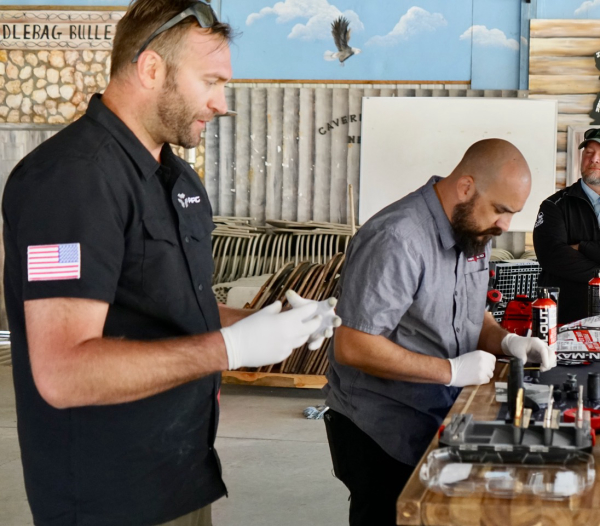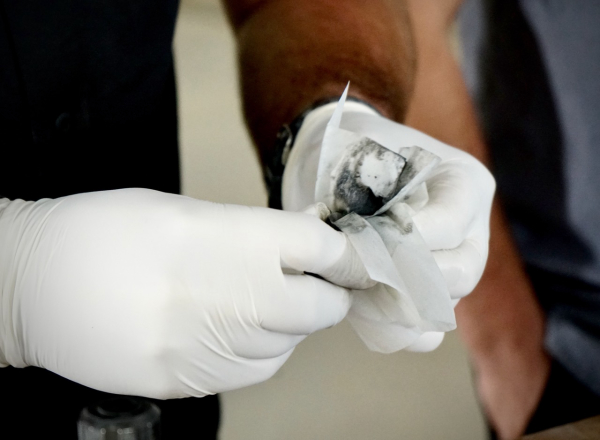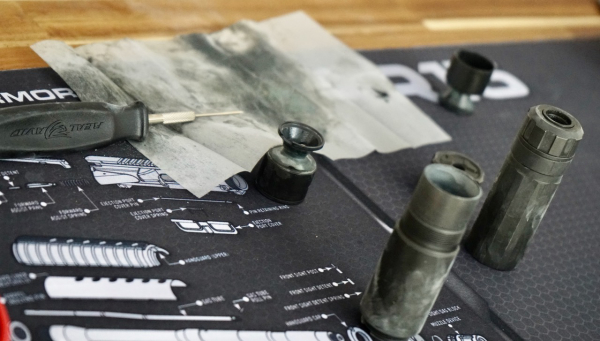On Friday, you got a superficial view of the Hush Fest - a descriptive name for an event that was a refresher course for everyone in attendance on the viability of using a suppressor on everything from handguns to bolt-action rifles.
After the muffled sound of gunfire and clang of steel ended, however, we started getting into some of the nitty-gritty of suppressor ownership. No, not the legalities of purchase, approval, registration and (delayed) ownership, that’s a course for law schools, not writers who specialize in the outdoors.
This education was on how an area where I’m admittedly weaker than most: maintenance. To be more exact, how to determine when it’s time to clean your suppressor(s); then how best to accomplish what is yet another grimy task.
As one of the people who veered away from black powder in the days when it took major efforts and an odor like rotten eggs that won no points with the family, I have never been wild about the work involved in cleaning messier guns.
It’s a running joke with friends that while I still have and occasionally shoot my first gun, (a well-used .22 s/l/lr model Ithaca Model 49 single shot saddle gun that was “Boy Scout approved”), it’s “likely not” a .22 caliber. In 50 plus years of ownership, it has never been thoroughly cleaned. One friend says “it’s probably a slightly smaller caliber than a .177 pellet gun these days, but you can still hit anything you can see with it.”
Get the picture? I am not the poster child for sparkling clean guns. As Rob Leatham said to me once, “I don’t clean my guns unless they stop running.” That may have been the worst of many mental impressions he’s left on me over the years.
Suppressors, by their nature and purpose, are gunk collectors. And not the usual kind of detritus you’ll get on equipment. Suppressors collect unburned gunpowder residue and heavy metal in the form of lead. Neither of these are on the recommended daily dosage lists of any vitamin manufacturer. Lead can cause serious neurological problems. Powder residue can cause unexpected explosions, fires and other unpleasant surprises.


There are a couple of basic clues to let you know it’s probably time to give your suppressor a serious scrubbing.
First clue: the suppressor may sound as if it’s not “suppressing” as well as it should or as effectively as it had. As baffles and passages get fouled, effectiveness diminishes.
Second clue: the actual weight of the suppressor may change. Surprisingly, it may change significantly before you realize it. According to Bachmeier, it’s not uncommon for people to let a four-ounce .22 suppressor’s weight increase to as much as six-ounces before realizing it’s dirty.
A fifty percent weight increase might sound impossible to ignore, but it’s not.
After all, it’s not like you’re adding those two ounces immediately. Like those handles around your midsection, the buildup of debris takes time. Since many of us have reduced both the
frequency and quantity of our shooting practice, that change might not be so noticeable.
In fact, one of the common-sense suggestions from Bachmeier to tell beyond a reasonable doubt if it’s time a serious cleaning this: weigh your suppressor.
If it’s significantly heavier than the original specs, it’s time to pull on those gloves, get out the chemistry and tools and get busy.
There are many ways to clean suppressors, from soaking in solutions to immersion in sonic cleaning machines. Whatever method you choose, the net/net is this: it’s messy, will require picks, brushes and other cleaning tools, and there are definitely some safety concerns.
First, many cleaning solutions are potentially flammable solvents. You can’t be too careful around them. And a suppressor’s design means it might lend itself to retaining some of that (highly flammable) moisture.

Meaning: make certain the “can” is dry before shooting it. Solvents plus superheated gunpowder is a recipe for a bang somewhat larger than anticipated.
Another important concern: making doubly certain the path the projectile is taking down the inside of the tube is unobstructed. Suppressor baffles have “direction” -and that means there are large openings leading into smaller ones. When cleaning you need to make certain the large opening is pointed downward. That allows fluids to drain and lead and powder particles to fall free. If you hang your suppressor with the damp grunge jammed in the baffling, you have two potential issues: flammable residue igniting inside the tube, or if there’s enough junk in there, it could break loose, creating the suppressor equivalent of an “obstructed bore” - and no one wants that. Especially anyone who’s ever seen what happens when it leads to a boom coming from inside your gun.
Yes, you can use ultrasonic cleaning -but not on aluminum components. Apparently, ultrasonic cleaning has the potential to weaken aluminum -if you have a weak spot, ultrasonic cleaning can actually make it worse. To the point that it eventually cracks.
This isn’t the be-all, do-all instructional piece on cleaning suppressors. But it’s a baseline to start for information.
You can also find lots of helpful information on the Real Avid blog or the AAC (Advanced Armament Company) website. That’s the place to find specs if you have an AAC product that’s not quite as hush-hush as it used to be as well. You can also find out lots of helpful information if you’re thinking it’s time to install a “hush kit” on your gun.
We’ll keep you posted.
— Jim Shepherd